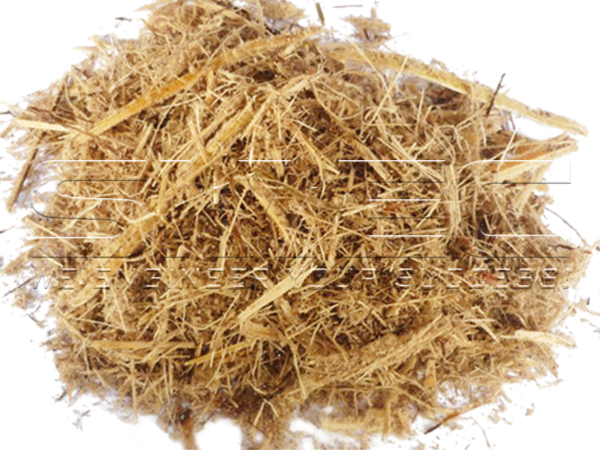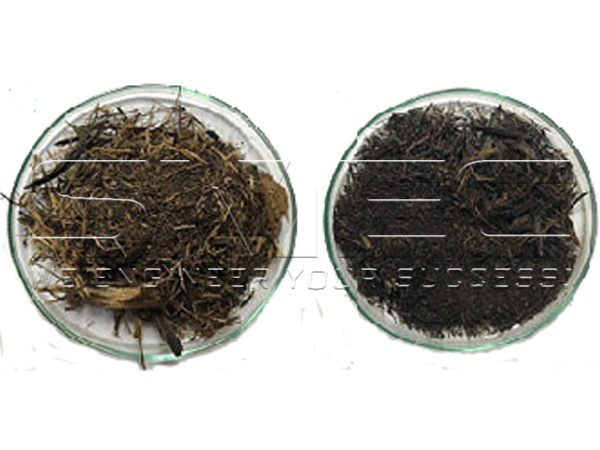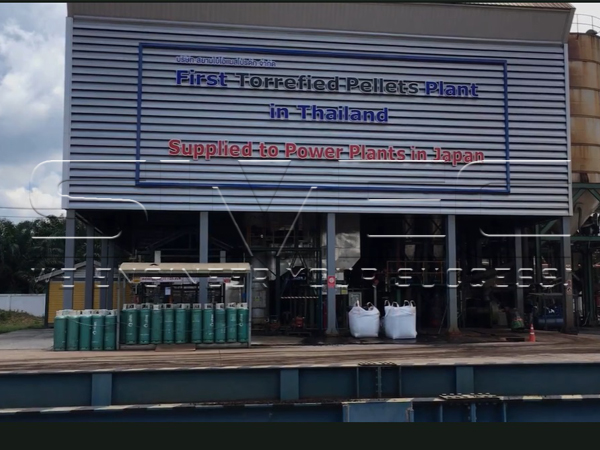Torrefaction Upgrades Sugarcane Bagasse
Some problems of bagasse utilization are similar to other conventional biomass, such as the high moisture content, high oxygen content, hygroscopic nature, low calorific value and heterogeneous properties, causing problems in collection, storage, transportation and low energy conversion.
These problems can be overcome by thermal pre-treatment named torrefaction which is developed to upgrade the characteristics of sugarcane bagasse. SIMEC torrefaction technology for biomass is a thermo-chemical conversion process under atmospheric pressure conditions and in the absence of oxygen.
Torrefied bagasse converts the material into a coal-like solid fuel. It contains a high energy density that is similar to coal, but higher than for wood pellets.

Raw Sugarcane Bagasse

Torrefied Sugarcane Bagasse
Typically, with the torrefaction temperature up to 275℃, the high heating value of bagasse can be increased from 14.33 MJ/kg (raw bagasse) to 24.01 MJ/kg(torrefied bagasse).
The HHV of coal is always in range of 25–35 MJ/kg . It is approximately that the HHV of torrefied bagasse is close to of coal.
Report of analysis for raw and torrefied bagasse samples:
|
Proximate analysis (wt % dry basis) |
Raw Bagasse | Torrefied Bagasse |
| Fixed Carbon | 14.26 | 44.04 |
| Volatiles Matter | 83.46 | 51.85 |
| Ash Content | 2.17 | 3.95 |
| Sulfur | 0.11 | 0.15 |
| Fuel Ratio | 0.17 | 0.85 |
|
Ultimate analysis (wt % dry-ash free basis) |
||
| Carbon | 46.37 | 58.25 |
| Hydrogen | 6.29 | 2.81 |
| Oxygen | 46.79 | 38.68 |
| Nitrogen | 0.55 | 0.31 |
| Lignocellulosic composition (wt. %) | ||
| Hemicellulose | 18.81 | 1.37 |
| Cellulose | 23.08 | 0.22 |
| Lignin | 11.35 | 89.62 |
The lignocellulose or biomass composition comprises hemicellulose, cellulose and lignin. The torrefaction process can significantly affect the lignocellulose components. From the torrefaction of sugarcane bagasse, it’s found that hemicellulose and cellulose decline while lignin increases, when the torrefaction temperature increases.
Experimental data shows that a higher torrefaction temperature will lead to hemicellulose and cellulose decomposition. Lignin of the torrefied bagasse is highest at 89.62% for a torrefaction temperature of 275 ̊C. This feature means that it’s more easy to make black pellets using torrefied bagasse.

Torrefied Pellet Plant
SPM650s Torrefied Pellet Mill
The reactivity of the torrefied bagasse samples was lower due to their lower amount of volatile matter and the char formation of bio-polymers compared to the raw bagasse. Therefore, the torrefied bagasse can be as advanced solid fuel in heat and power applications.
© Copyright of articles and pictures on this site belongs to SIMEC. Any company, media, website or individual are not allowed to reprint, reproduce, repost, modify or use in other ways without permission. Otherwise SIMEC will have the right to pursue legal responsibilities.